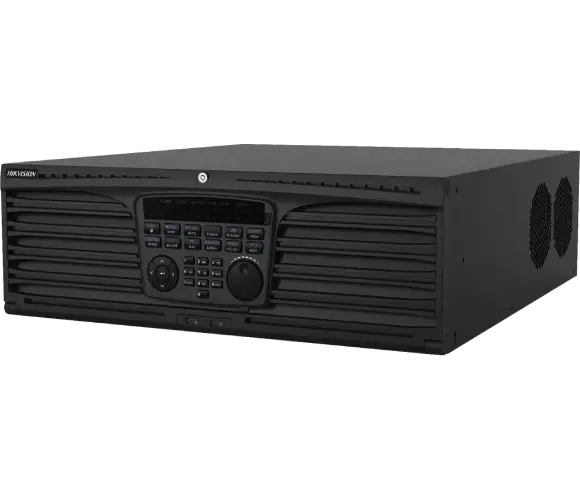- HOME
- PRODUCTS
- SOLUTIONS
- SIRA Certified CCTV
- Mobile Attendance APP
- Payroll Software
- Attendance Management
- Cloud Attendance Solutions
- Access Control Management
- Automatic Parking Barrier
- User Activity Monitoring
- Employee Productivity
- Investigate Employees
- Deter Insider Threats
- Analytics & Monitoring
- Cyber Safety
- Cloud Anti-Virus Software
- COMPANY
- CONTACTS
Closed-circuit television, also known as CCTV video surveillance, is the use of video cameras to transmit and / or record a video signal to a specific place. CCTV surveillance is useful for video monitoring & surveillance requirements in secured areas such as banks, airports, military installations, jewelry stores, casinos, public areas and convenience stores. HEYCE supplies effective and low cost video surveillance cameras & equipment. HEYCE provides latest Cameras and DVRs with cutting edge technologies at best prices with installation and after sales support services.
-3-Thump.webp)
- HD CCTV Video Surveillance
- Cutting Edge Technology
- School, Home & Office Surveillance
Learn More
- 4-128 Channel DVR/NVR
- Alarms, Alerts, Email Notification
- View Remotely on Smartphones
Learn MoreFirst generation video surveillance techniques involved constant monitoring because there was no way to record or store information. Reel-to-reel media was developed that enabled the recording of surveillance footage. However, since these systems required magnetic tapes to be changed manually, it turned out to be time consuming, expensive and unreliable process, with the operator having to manually thread the tape from the tape reel through the recorder onto an empty take-up reel. Later, VCR technology became available, making it easier to record and erase information.
After several decades of VCR usage, digital multiplexing was developed, allowing several cctv cameras to record at once, as well as time lapse and motion-only recording. This increased savings of time and money and the led to widespread acceptance use of CCTV.
Currently, CCTV technology has been enhanced with internet-based products and storage systems, and enhanced technological developments.
Uses of CCTV Surveillance Solutions
- Crime Prevention
- Traffic Monitoring
- Industrial process monitoring
- Control of retail operations
- School, Home & Office Surveillance
- Border Security & Surveillance
- Enhanced face detection with specialized CCTV cameras
- Controlled analytics & identification
- Video Evidence Retention, storage & preservation
Analog security cameras are connected using coaxial cables to DVR Systems & record video surveillance footage directly into the DVR’s recording medium. These cameras deliver focused images with utmost clarity, eliminating rough edges, even when detecting fast moving objects. These cameras effectively function irrespective true day/night lighting condition with intelligent use of an IR filter that automatically activates its IR LEDs according to the light conditions.
Analogue CCTV cameras provide low cost & reliable CCTV surveillance solutions. DVRs can be networked with LAN or WAN to provide comprehensive recording and global viewing possibilities.
A growing technology in CCTV is internet protocol cameras or IP cameras. IP cameras use the Internet Protocol (IP) to connect to Local Area Networks (LANs) or Wide Area Networks (WANs) to transmit video across data networks in digital format. IP can optionally be transmitted across the public internet, allowing users to view their cameras through any internet connection available through a computer or a data enabled phone. For professional and public infrastructure security applications, IP video is restricted to within a network or VPN. It can also be recorded onto a remote server.
IP camera, unlike analog closed circuit television (CCTV) cameras, can send and receive data via a computer network and the Internet. Although most cameras that do this are webcams, the term "IP camera" or "netcam" is usually applied only to those used for surveillance.
Main Types of IP cameras:
Centralized IP cameras- require a central network video recorder (NVR) to handle the recording, video & alarm controlling.
Decentralized IP cameras- which do not require a central NVR, as the cameras have recording function built-in and can thus record directly to any built-in storage media, such as SD cards, NAS (network attached storage) or a PC/server
IP Camera advantages
- Two-way audio via a single network cable allows users to communicate with what they are seeing, Moreover, IP cameras can be moved around anywhere on a network easily
- Transmission of commands for PTZ (pan, tilt, zoom) cameras via a single network.
- Remote accessibility: live video from selected cameras can be viewed from any computer, anywhere, and also from many mobile smartphones and other devices.
- Distributed intelligence: with IP cameras, video analytics can be placed in the camera itself allowing ability in analytics solutions.
- Encryption & authentication: IP cameras offer secure data transmission through encryption and authentication methods such as TKIP, AES, WPA & WPA2.
- IP cameras are able to function on a wireless network.
- PoE - Power over Ethernet: Modern IP cameras have the ability to operate without a power supply. They can work with the PoE-protocol.
- IP camera communication signals are not electronic voltage, it is numerically decoded as bits and bytes with security features and TCP/IP protocol.
IDVRs, or Digital Video Recorders, are devices which record video to a hard drive, USB flash drive, SD memory card, SSD or other local or networked mass storage device. Digital video recorders configured for physical security applications, to record video signals from closed-circuit television cameras for detection and evidence storage purposes. Many DVRs are designed to record audio file as well. DVRs have evolved into devices that are feature rich and provide services that exceed the simple recording of video images. A DVR CCTV system provides a multitude of advanced functions over VCR technology including video searches by event, time, date and camera. There is also much more control over video & audio quality with frame rate enhancements allowing disk space usage to be optimized. Should the storage disc become full, the DVR can also be set to overwrite the oldest security footage (FIFO mode). In networked DVR security systems remote access to security footage using a PC can also be achieved by connecting the DVR to a LAN network or the Internet. The latest and professional digital video recorders include video analytics options, to enable functionality such as 'virtual tripwire' or even the detection of abandoned objects on the scene.
DVR - Key Hardware Features
- Designed for rack mounting or desktop configurations.
- Single or multiple video inputs with connector types consistent with the analogue or digital video provided such as coaxial cable, twisted pair or optical fiber cable.
- Looping video outputs for each input which duplicates the corresponding input video signal and connector type. These output signals are used by other video equipment such as matrix switchers, multiplexers, and video monitors.
- Controlled outputs to external video display monitors.
- Connections to external control devices such as keyboards.
- Front panel switches and indicators that allow the various features of the machine to be controlled.
- Network connections consistent with the network type and utilized to control features of the recorder and to send and/or receive video signals.
- A connection to external pan-tilt-zoom drives that position cameras.
- Internal CD, DVD, VCR devices typically for video storage.
- Connections to external storage media.
- Alarm event inputs from external security detection devices, usually one per video input.
- Alarm event outputs from internal detection features such as motion detection or loss of video.
DVR - Recording Software Salient features
- The video capture rate may be programmed to automatically adjust the capture rate on the occurrence of an external alarm or an internal event
- The image resolution may be programmed to automatically adjust the image resolution on the occurrence of an external alarm or an internal event.
- Variable compression methods determine quality of playback. H.264 hardware compression offers fast transfer rates over the Internet with high quality video.
- Motion detection feature can be programmed to trigger an internal event that may be output to external equipment and/or be used to trigger changes in other internal features.
- Lack of motion detection can be programmed to trigger an internal event that may be output to external equipment and/or used to trigger changes in other internal features.
- Direction of motion detection feature detects the direction of motion in the image that has been determined by the user as an unacceptable occurrence, which can be programmed to trigger an internal event that may be output to external equipment and/or be used to trigger changes in other internal features.
- Alarm and event logging on appropriate video inputs.
- Alarm and event search.
- One or more sound recording channels.
- Routing of input video to video monitors based on user inputs or automatically on alarms or events.
- Input, time and date stamping.
- Archival of old data to save recording space.
NVR- Key Features
A network video recorder (NVR) is a software program that records video in a digital format to a disk drive, USB flash drive, SD memory card or other mass storage device. An NVR contains no dedicated video capture hardware. However, the software is typically run on a dedicated device, usually with an embedded operating system. This can be termed as an NVR hardware. Instead, to help support increased functionality and serviceability, standard Linux and Windows operating systems are used with standard Intel processors and video management software. An NVR is usually deployed in an IP video surveillance camera security system.
Network video recorders (NVR) are distinct from digital video recorders (DVR) as their input is received from a network rather than a direct cable connection to a video capture device or camera. Video on a DVR is encoded and processed at the DVR, while video on an NVR is encoded and processed at the camera, then streamed to the NVR for storage or remote viewing.
Hybrid NVR/DVR or HVR surveillance security systems exist which merges functions of both NVR and DVR. NVR home security systems that are wireless tend to be easy to set up, can be accessed through a web browser, and allow the user to be notified by email or SMS if an alarm is triggered.

